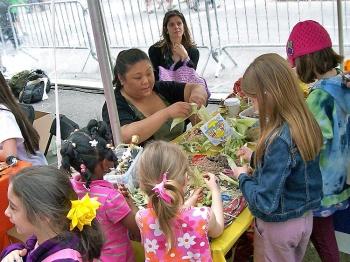From Recycle to Upcycle: Textile Recycling in New York City
In New York City many initiatives have been put in place over the years: improving the public transportation system, reducing emissions in public buildings, creating more parks, recycling of clothing.
TEXTILE RECYCLING: Donations at the Greenmarket in Union Square, manned by Alex from WearableCollections. Jean Harris/Epoch Times Staff
|Updated:

